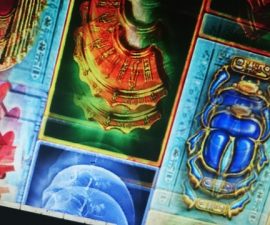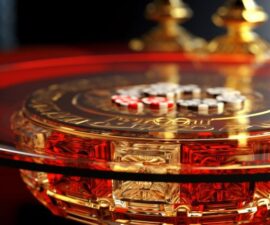Roulette Mechanics of a Real Roulette Wheel
All over the internet people are searching for easy ways to make money and of course gambling and roulette tactics and strategies are obviously high on many people’s radar. For example for my favorite game – roulette, you’ll see thousands of plausible and complicated strategies that apparently will guarantee your success. Throughout this site you’ll find details and explanations of many of these systems – but it’s best to remember none of them guarantee anything at all.
For this post though, let’s just focus on the primary focus of a game of roulette – the wheel. The roulette wheel is made of two main parts –
- rotor – the revolving inner part
- stator – the stationary outer part
Mechanics of Using a Roulette Wheel
The croupier spins the rotor in one direction whilst chucking the ball into the stator which travels in the opposite direction. When first spun the speed means that the centrifugal force presses it against the vertical rim of the stator. But slowly the momentum falls and the ball drops into the sloped part. The ball is in a kind of decaying orbit and it is falling inwards in a spiral trajectory.
Within the Stator you can probably make out the small metal shaped dividers which are known as deflectors or vanes. These are normally diamond shaped and have a huge affect on the trajectory of the ball mainly because if their diamond shape. If it hits a vane then ball will career off in a different trajectory, notice though that very often it slips between these and carries on in the same direction.
Finally you’ll see the ball, spirals down into the rotor which is spinning in the opposite direction. It is at this point that the ball first encounters the numbered pockets. There are yet more dividers here between the different numbered pockets, these are normally known as frets and these also can radically alter the balls trajectory as it falls in speed.
Eventually though the ball will settle in a single pockets and we will have a result. Imagine the huge number of forces and impacts involved in determining it’s final location – the speeds of spin, the ball, the various frets and the huge number of different collisions and angles required to determine it’s trajectory. Taking even a minute to watch and absorb these will make you think twice about dealer tracking.
In the next post I will cover some of the efforts of a mathematician called Ed Thorp and his efforts to analyse these forces with a view to producing an infallible roulette system.
What Makes a Roulette Wheel Random?
Here’s a little summary of the most important factor in the mechanics of a roulette wheel – ensuring it’s fair and random. A roulette wheel is considered random due to several factors:
- The wheel spins in one direction while the ball is spun in the opposite direction. This makes it impossible to predict the exact spot where the ball will land.
- The pockets where the ball lands are all the same size and shape, which means no specific pocket has a higher chance of catching the ball.
- The uneven distribution and sequence of numbers on the wheel also contribute to the randomness. The numbers are not arranged in numerical order and alternate between colors and odd and even numbers.
- The speed at which the ball and wheel are spun can vary with each spin, adding another level of unpredictability.
- External factors such as air pressure, temperature, and even the slight imperfections on the ball or wheel can affect the outcome, making each spin unique.
- The dealer who spins the wheel doesn’t have control over the outcome. The dealer cannot predict or manipulate where the ball will land.
- Finally, the principle of independent events applies to roulette – the outcome of one spin does not influence the outcome of the next spin.
These factors combined ensure that the roulette wheel is a game of pure chance, with no predictable patterns or sequences.




